Being in Germany I felt like I had to provide you with what pretty much every German living abroad misses the most about German cuisine: GERMAN BREAD!
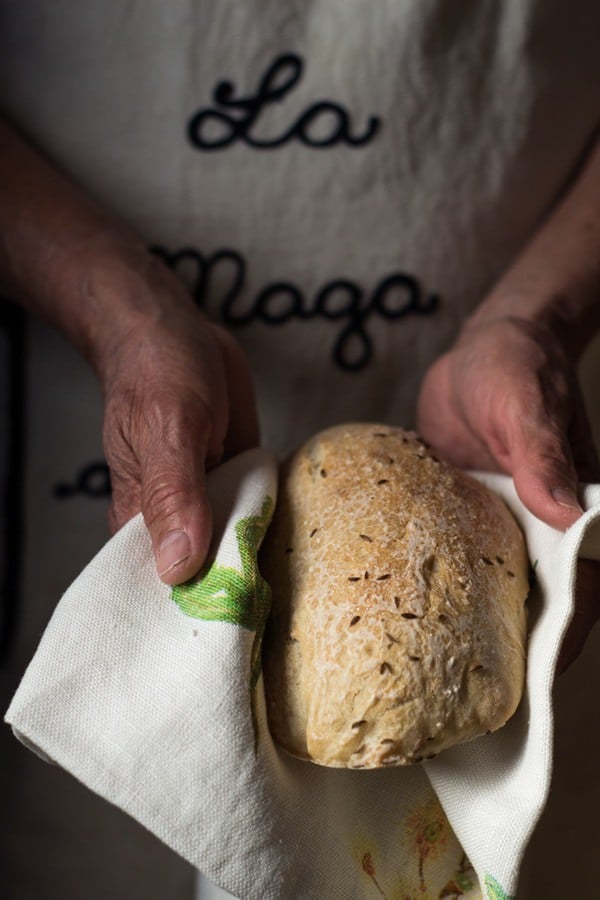
I was never a big bread eater when still living here but I do miss this the most about German cuisine, too. Everything else I have been able to easily prepare or buy abroad.
German bread, however, is either very hard to get or crazy expensive. Even if I was lucky enough to find a German bakery they usually had 3-5 different loafs and rarely any typically Swabian bread like “Seele” which means soul and pretty much is the soul of South German cuisine.
Most cultures have light airy taste neutral bread but German Bread like Seele has rich and yeasty flavour and the texture is chewy and dense. I absolutely love it!
Cumin seeds sprinkled on top give it an earthy taste and smell, too. If you don’t like cumin seeds you can Americanize this German Bread and use Everything Bagel Seasoning instead. Absolutely delicious, too!
This bread is not prepared like many breads in a couple of hours. Authentic German bread is a true work of art. It takes time, patience, dedication and most of all LOVE. Love for baking and traditional bread-making. Love for real ingredients, real nutrition, real food.
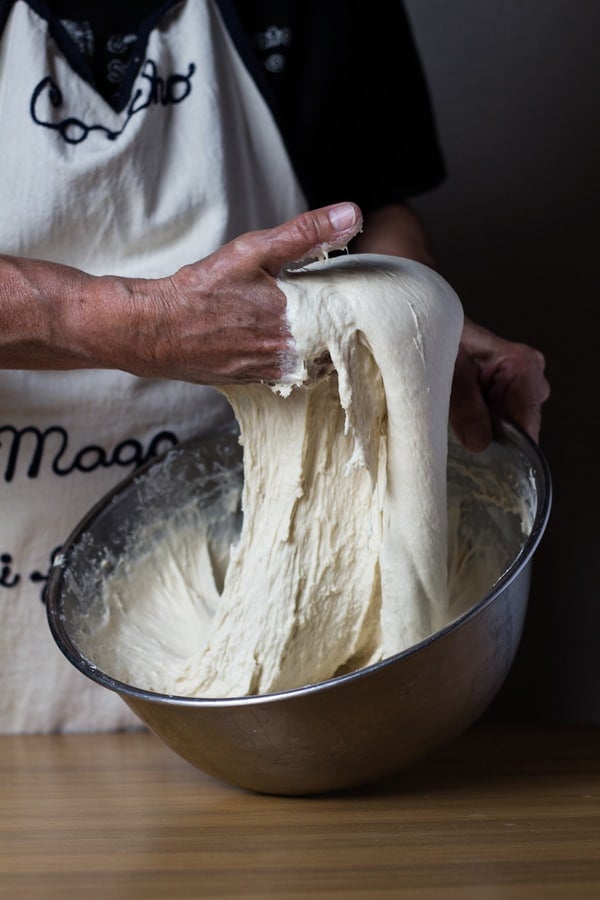
The dough is kneaded only by hand. No machines involved. Only time, ingredients and hands. Anybody with an oven can make it.
The rising periods are long enough to go run some errands, take a nap, go for a walk, enjoy some coffee with a friend or whatever else you fancy doing.
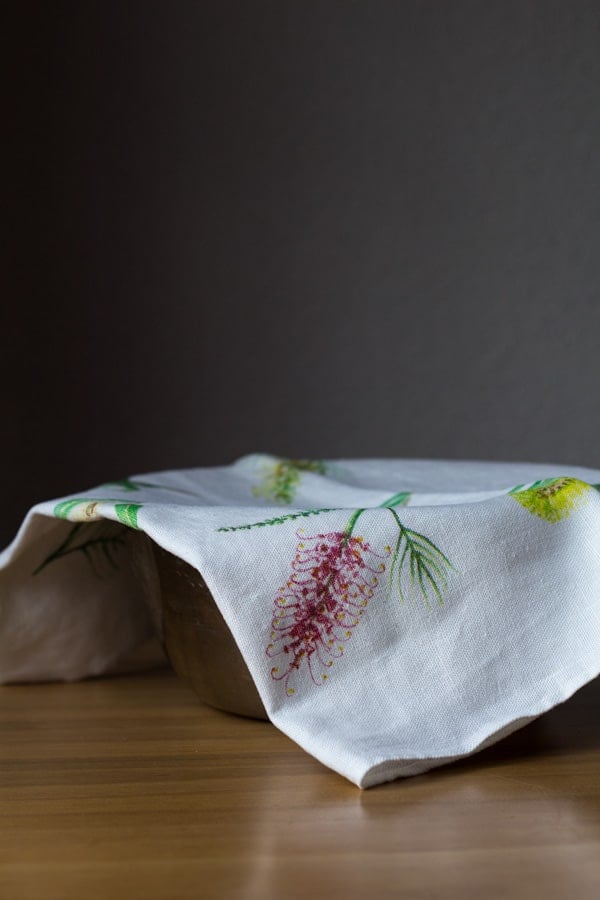
I enjoyed making this so so much. I especially enjoyed photographing part of the process including my mother’s beautiful hands. She has the perfect baker hands. Strong, rough and dark.
Don’t you think they are just gorgeous?
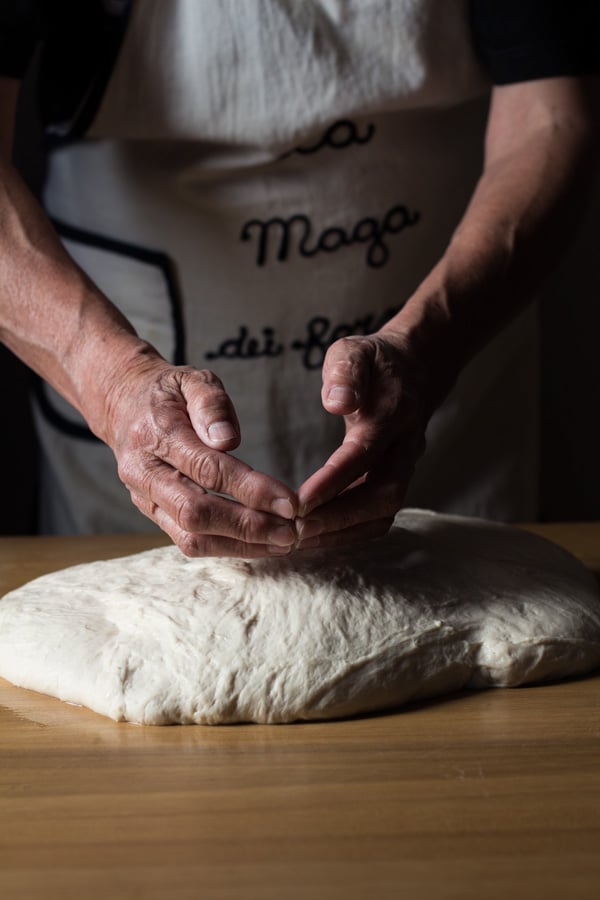
The dough was beautiful, too. Very chewy and sticky and the smell was amazing. I almost felt like taking a bite of dough.
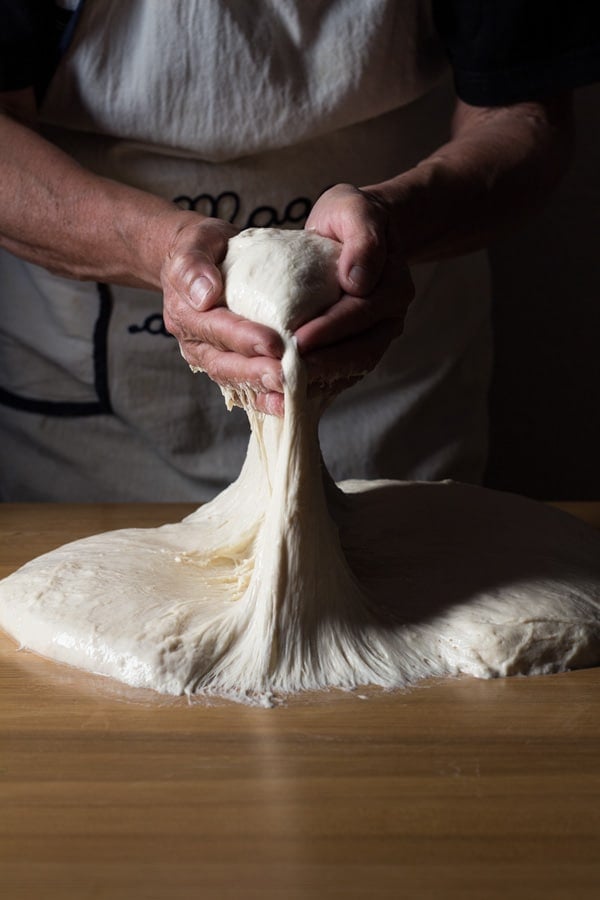
When it finally was in the oven it spread a delicious bakery smell all over the house. The perfect bread for an authentic Swabian dinner: Seele with butter, deli meats, cheese and raw vegetables like cucumber, tomatoes and radishes.
Writing this makes me feel all nostalgic about times that this was the norm for me almost every evening. Seele, I love you! German bread, I love you! Germany, I love you!
I know it takes a long time to make but I encourage you to really make it. It is so delicious and the process is almost therapeutic. Bread-making should be something taught at school I believe. Food preparation shouldn’t always be easy and fast….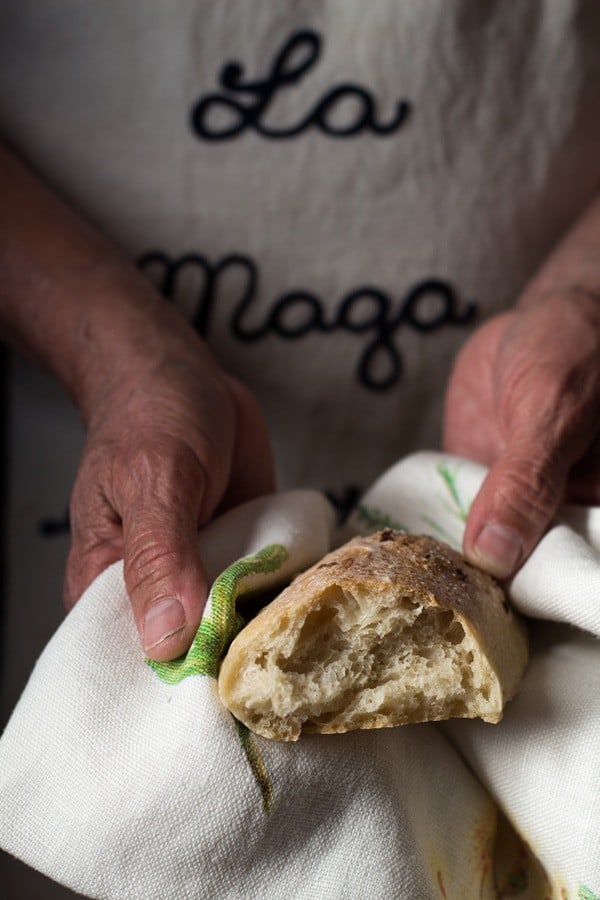
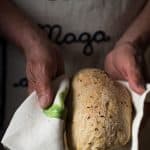
German Bread (Seele)
Ingredients
- 200 g all purpose flour
- 220 g water
- 5 g fresh yeast
- 800 g all purpose flour
- 480 g water
- 30 g fresh yeast
- 25 g Salt
- 3 g sugar
- 20 g milk
- coarse salt
- cumin seeds
Instructions
- The night before mix 200 g flour, 220 g water and 5 g yeast in a large glass or stainless steel bowl together with a spatula until smooth and all flour is incorporated into the water.
- Cover with a kitchen towel and leave at room temperature for at least 12 hours (max. 18 hours).
- Add remaining ingredients (except coarse salt and cumin seeds) and combine with your hands.
- Once all combined, continuously knead by hand for about 15-20 minutes. It doesn't have to be fast only constant.
- Cover with a kitchen towel and leave at room temperature for 45 minutes.
- The dough should now be double in size.
- Wet your hands and divide the dough into three sections and twist each of them like you would a wet towel. The dough is still very sticky and this will be messy but try to twist and twist and twist it by holding one end in one hand and the other turning the wrist to twist the dough. Do this with all three sections and return to bowl.
- Cover with a kitchen towel and leave at room temperature for 45 minutes.
- Repeat the twist thing with each of the three sections and return to bowl and let rest 5 minutes.
- Preheat oven to 530 F (275°C)
- Slightly wet a flat surface, pour out the dough onto the surface, slightly wet the dough (preferably with a spray bottle) on top and let rest uncovered for 30 minutes.
- Now form a U with your hands, as shown in the picture above, dive into the dough and lift out bread pieces the size of your two hands, also as shown on the other picture above.
- Place bread pieces on a baking sheet at least 2 inches apart so they don't stick together when in the oven.
- Wet their surface again (preferably with a spray bottle) and sprinkle with coarse salt and cumin seeds.
- Place a baking sheet with one cup of water into the bottom rack of the oven and the baking sheet with the breads into the middle rack of the oven and bake for 10 minutes.
- Reduce the heat to 450 F (230°C), open the oven door and release all the steam.
- Close the door again and bake for 15 more minutes.
- Remove from oven and place on a wire rack to cool completely to give the bread time to reincorporate all the steam to the bread core and make it chewy.
- Enjoy!!!


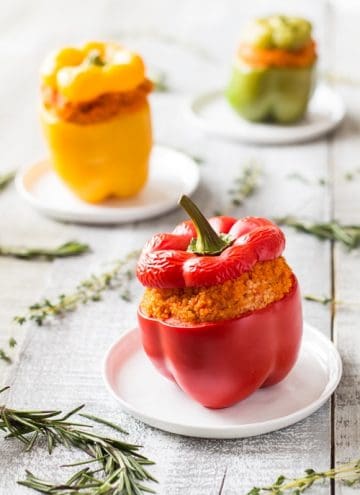 Bulgur Stuffed Bell Peppers
Bulgur Stuffed Bell Peppers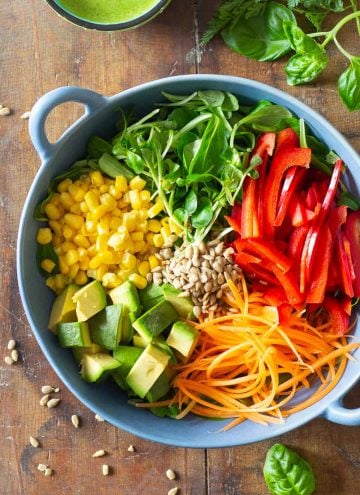 Summer Salad with Homemade Salad Dressing
Summer Salad with Homemade Salad Dressing Lemon Infused Water
Lemon Infused Water
Megan says
As a novice bread baker, I was worried I’d bitten off more than I could chew (pun intended). Fortunately, it was already underway, so I stuck with it.
The bread turned out perfectly (your recipe and instructions are fantastic), is delicious, and was remarkably easy to make!
Lorena Grater says
I’m so so happy you enjoyed it! I was actually looking at the blog post the other day and considering working on it some more to add extra photos and make a video for it. I’m glad the instructions as is were clear enough already.
Ralph Sherwin says
I can’t comment on the recipe (above), yet. I will try it in the future, but I did want to add a couple of comments to the posts above. First, it’s important to remember that there may be many ways to accomplish this bread, and I do love the “hands on” photographs of your mon in this article. My wife comes from a town in the Black Forest, and one of my favorite pastimes is an early morning trip to a bakery for bread, particularly seele. After my first taste of seele, I fell head over heals in love with it; it is remarkably crusty, chewy, and seasoned with some of my favorite things.
My comments have to do with ingredients. First, seele is a bread made from dinkle (spelt) and though a form of wheat, it has a distinctive nutty flavor that is not found in the red wheat you will find in even the best “all purpose” flour. Using spelt can only make it better.
Second, even though the german word for the seed used is “Kummel”, this is not cumin seed, but caraway seed.
The first time I saw this bread made in a Swabian kitchen it only took hours. The technique was new to me, as the “starter” (yeast and water) was stirred together in a hole made in the entire measure of flour. The starter was rested for 20 minutes or so, before combining with the salt and the rest of the flour, and rested again, before proofing.
My mouth is watering; I’m going to go grind some spelt.
Sophia says
Wow!!! Followed the recipe step by step and absolutely amazing. I am so happy. It was my first bread and it came out beautifully. Thank you so much for the recipe!
Lorena says
Sophia, I am so happy your bread turned out beautiful!! Thank you for coming back and rating the recipe and leaving this lovely comment :)
Daniela says
This post is 2 years old and I can’t believe I find it now while checking your Artisan Apple Bread.
I’m German and your pictures look perfect! Only people in the Southwest of Germany know Seele and we take it very serious ha! My husband is American and he basically lives of it when we’re there. I’m so gonna try this recipe this weekend. Wish me luck!
Lorena says
Viel Glück Daniela!! Das wird bestimmt und du und dein Mann könnt dann auch in den USA köstliche Seelen genießen :)
linda says
how do we convert metric measurements to our usa measurements?
Lorena says
200 g all-purpose flour = 1 3/5 US cup
220 ml water = a little less than a US cup, about 1 Tbsp less (1 US cup = 236 ml)
1 cube fresh yeast tends to be 42 g. Use about 1/8 first and then the other 7/8 later in the recipe.
800 g all-purpose flour = 6 2/5 US cup
480 ml water = a little less than 2 US cups, about 1 tsp less
25 g salt = 4 2/5 tsp
3 g = a pinch
20 ml = 1.5 tbsp
It’s muuuch easier to go by a digital scale though. They are not expensive at all. You can find good ones for $10-15 and it will serve you for many different things and recipes :)
Chef Candace says
I am a pastry chef. Don’t use USA imperial measurements. Flour can be very different and proof differently depending on where you live. So, weigh all ingredients that you can. That is what I do and it has never failed me.